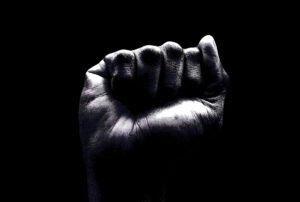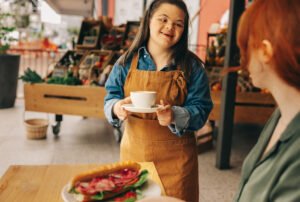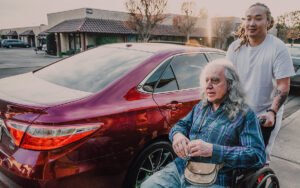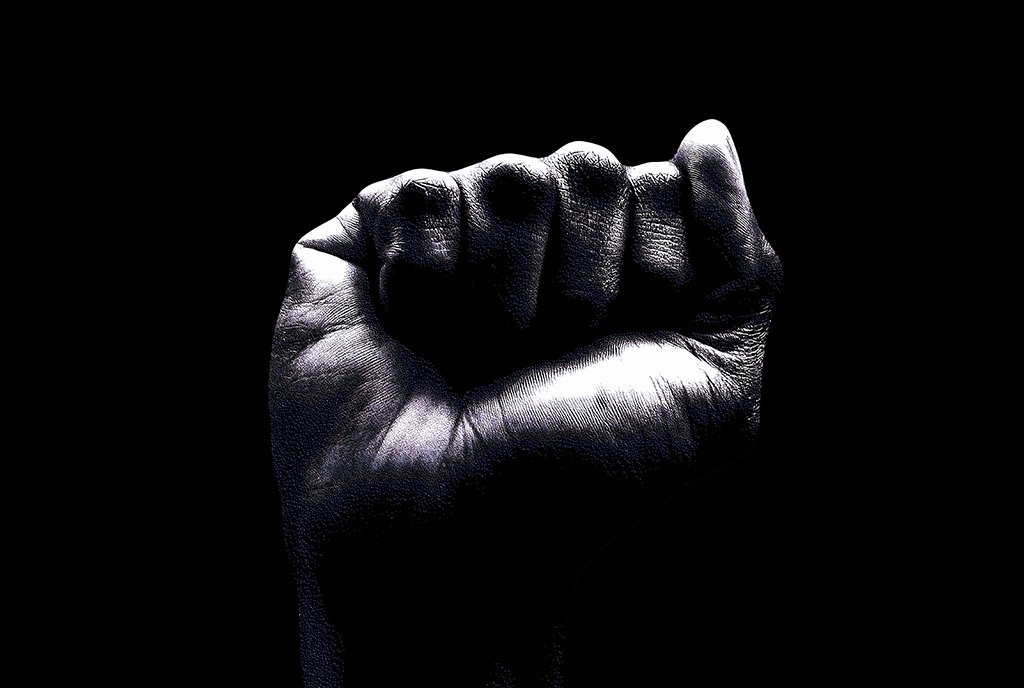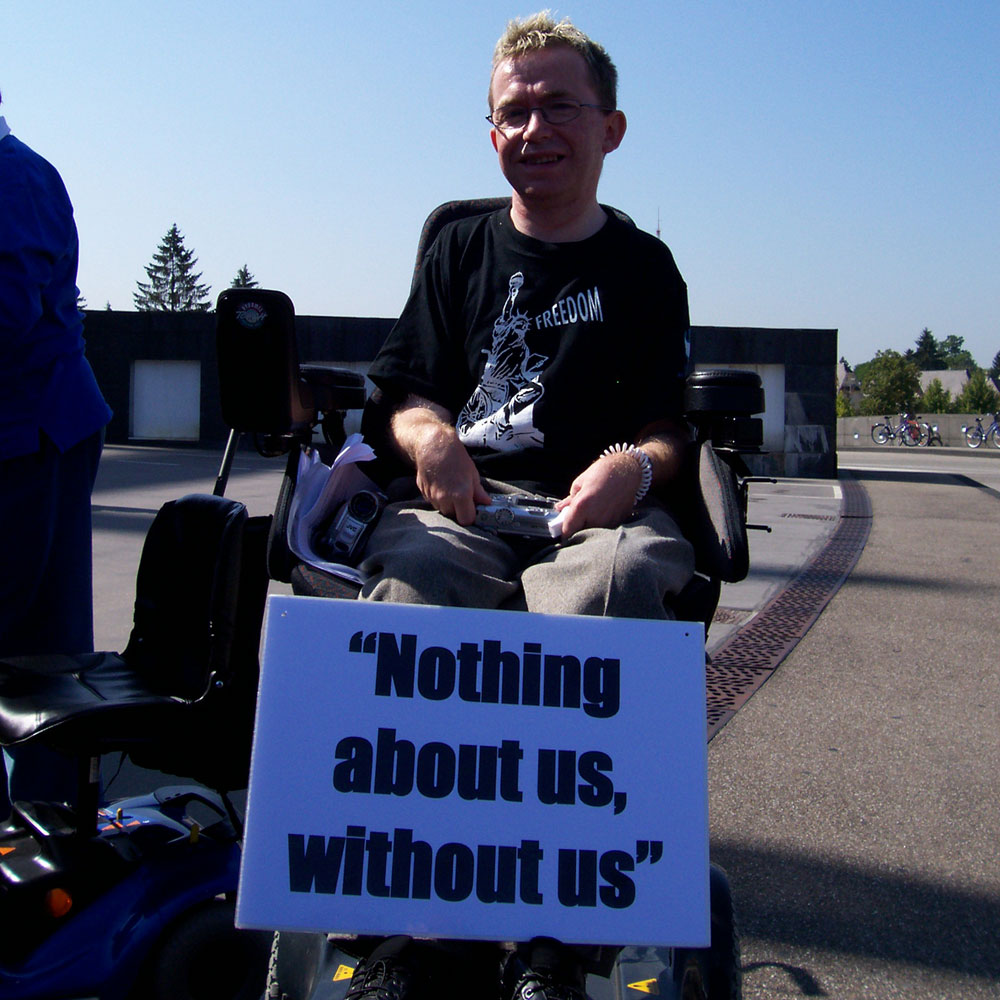
Disability is all around us. Fifteen percent of the world’s population live with a disability and, throughout our lives, most of us will experience disability, whether temporary or permanent. Yet people with disabilities often remain at the margins, experiencing inequality and discrimination, whether it be in access to healthcare, education, or employment. Despite legal protections, disabled people often face multiple barriers at the ballot box, denying them the right to vote. And now, as the world confronts COVID-19, people with disabilities are disproportionately affected, facing both a greater risk of contracting the virus and difficulty accessing critical health services.
People with disabilities bring unique perspectives to tackling injustice and inequality, particularly disabled women, Black, indigenous, queer, and gender-nonconforming leaders. Yet organizations—mine included—haven’t always acknowledged that disability rights is central to social justice. Whether you’re a nonprofit working to end systemic racism or an institution building a more just economy, achieving your goals requires acknowledging and dismantling the oppression of people with disabilities.
With so much upheaval right now, from a global pandemic to a contentious US presidential election, the need to integrate the leadership and participation of the disability community into our collective work has never been more evident. Although we share the struggle for justice, it’s only by working together that we will successfully remove the obstacles ahead and create a future of equality and opportunity for all.
Understanding and embedding disability rights into our work as nonprofits and funders is a multifaceted, ever-evolving process. When the Ford Foundation pledged to make addressing disability part of our larger commitment to tackling inequality, we took to heart the mantra of the disability rights movement, “Nothing about us without us.” We had a lot to learn, but our partnerships—with both the disability community and our grantees, who started on this journey long before—have been both instructive and invaluable. Like most things, the more you invest, be it time or resources, and the more people you can bring into the process, the faster you’ll make progress.
In honor of National Disability Employment Awareness Month, we joined forces with a number of our partners, from Community Change to Human Rights Watch, each at different stages in their journeys toward inclusion. Together, we laid out five concrete actions organizations of any kind can take to advance disability inclusion and move closer to equity and justice.
“If civil society organizations wish to advance social justice and civil rights, they must include disability issues. For too long disability has been treated as an afterthought.”—Alexandra Reeve Givens, Center for Democracy and Technology
1. Educate your organization.
Understanding disability and building institutional knowledge is a critical first step. By exploring society’s history of systemic discrimination and exclusion of people with disabilities, you can uncover ingrained ideas and practices in your nonprofit and its work and start the journey to put an end to them. This need not feel overwhelming, as disability organizations and leaders are eager to work with you and share their knowledge.
Learning more about the evolution of the disability rights movement can be both engaging and energizing, as you uncover the critical links the community has and continues to build with other social justice movements. Listen and learn with humility from disabled leaders about both the power the community has built to dismantle barriers and ableism of all kinds. Crip Camp, a compelling documentary from Nicole Newnham and Jim LeBrecht, is a great start, as is the Disability Visibility Project, Alice Wong’s extraordinary effort to record disability history one story at a time. The Smithsonian also has an amazing online exhibit that chronicles people with disabilities who never made it into the history books.
While there’s a lot to learn, there’s also many organizations that have walked this path. Organizations such as the American Civil Liberties Union and Community Change regularly bring in advisors and experts for trainings and workshops. Hand in Hand, a network of employers working to support domestic workers, holds monthly study sessions to foster aligned understanding across its team. Even Disability Rights Washington, an organization well versed in the challenges of the disability community, holds regular workshops to deepen its knowledge of disability justice and how it ties to racial, gender, and other justice movements.
2. Become a more mindful, inclusive employer.
In the United States, one in five people has a disability, yet workplaces rarely welcome and celebrate disability identity. Strengthening representation of people with disabilities on our teams is a critical step towards ensuring that our staffs reflect the communities we serve, and that their valuable lived experience informs our social justice work.
At Ford, we found that including disability in our employee surveys provided crucial baseline data and helped us understand how many staff self-identified as having disabilities and how we could strengthen our culture of inclusion. We also worked with the Job Accommodations Network (a free resource!) to develop a new reasonable accommodations policy.
Do you provide reasonable accommodations, whether it’s accessible technologies, policies that allow service animals, or flexible working hours? What percentage of your team has a disability? Becoming a truly accessible organization is ongoing, relational, and requires engagement from across your team, but an audit will help you recognize missteps and begin to build an inclusive culture that supports people with disabilities and makes them feel valued and welcome.
“As we set new norms and a new culture for our sector, it’s important that we’re asking the questions. It’s hard to ask the questions if within your staff, you don’t have people who are themselves disabled or empowered to ask those questions.”—Lorella Praeli, Community Change.
One of the most important commitments an organization can make is to set hiring goals. Right now, only 40 percent of disabled people, ages 24 to 54, are employed. All of our partners, from Human Rights Watch to the Center for Democracy and Technology, stressed the value of bringing on both people with disabilities and those with disability expertise to build a truly inclusive team—and that includes leadership and boards. For example, Human Rights Watch just named Judith Heumann to its board.
While making an organization truly inclusive requires time and resources, creating safe spaces for employees can be a valuable—and immediate—offering in the right direction. Susan Mizner, the head of the ACLU’s Disability Program, recommends establishing employee resource groups. These are voluntary, employee-led groups that allow staff to come together freely to discuss their personal and professional challenges and cultivate a sense of equity and community. The Employer Assistance and Resource Network on Disability Inclusion is a free resource that shares ways to promote this positive culture.
3. Make your communications more accessible.
Changing how you communicate with and about the disability community is not only important, but it’s also a tangible and practical undertaking for organizations new to disability justice work. There are a number of low-to-no-cost practices that your organization can implement immediately.
Sign up for our free newsletters
Subscribe to NPQ's newsletters to have our top stories delivered directly to your inbox.
By signing up, you agree to our privacy policy and terms of use, and to receive messages from NPQ and our partners.
As you work toward longer-term efforts like creating an accessible website, videos and PDFs, there are small changes that can go a long way. While you might not yet be familiar with the most respectful disability language, you learn more about ableist language—outdated terms like “handicapped”, othering terms such as “special needs,” or offensive phrases like “paralyzing” and “blind spot”—that reinforce negative stereotypes, so you can change to avoid unwarranted exclusion. Our partner, the National Disability Rights Network, provides helpful guidelines for communicating. Take stock of the stories you tell and the people you feature in your photos and videos to find ways to incorporate more people with disabilities. There are many resources that can guide you in telling respectful and powerful disability stories.
Rooted in Rights, part of Disability Rights Washington, has been an incredible partner throughout Ford’s journey teaching us how to improve our communications and make them clear, direct, and easy to understand for all audiences. Its AccessThat guides—which cover everything from writing alt-text to best practices for presentations to creating accessible videos—can help you get started.
Whether your organization is focusing on gender equality, civic engagement, or COVID-19 relief, your work impacts people with disabilities—in many cases, disproportionately—and it’s our responsibility to lift up their voices and experiences if we want to tell a different, truly inclusive story.
4. Identify opportunities for collaboration with the disability movement.
As organizations working on social justice, we know there is power in numbers when advocating for systemic change. Joining forces with the disability community can build a stronger, more united front when taking on an issue and also increase attention for disability rights organizations seeking greater visibility and support from the funding community. To date, just two percent of funding for human rights includes people with disabilities, when it should be ten times that to reflect our population.
For instance, when Hand in Hand began organizing a campaign around the Domestic Workers Bill of Rights, they met with people with disabilities who employ home attendants, learned about their historic fight against institutionalization, and then together crafted solutions with the employers that protected workers’ rights and ensured access to care.
“Why advance disability justice? It’s not just critical to achieving a world where we can all thrive; it also radically changes how we [as social justice leaders] approach our work.”—Jamila Headley, Center for Popular Democracy
As the ACLU expanded its work on incarceration, it took an explicitly intersectional approach to tackle both racism and ableism. While Black students are often pushed out of classrooms and into the US juvenile and criminal justice systems, the ACLU found that the number doubled for Black children with disabilities. It teamed up with the Disability Rights Education and Defense Fund and the National Council on Disability to deepen its understanding and end the school-to-prison pipeline.
5. Rethink your definition of “justice.”
We are all working toward a more fair, equitable world, but that requires expanding how we think about equity and justice. When we seek to be more inclusive, we must ask, “Who are we leaving out?”
Without reflecting on how disability impacts our work, incorporating that thinking into our programs and policies, and addressing ableism across the board, justice will remain elusive for one in five of us. In other words: There is no justice without people with disabilities. As we have learned at Ford, integrating disability, in both small and significant ways, has accelerated our impact.
Our partners are finding simple, effective ways that can make a difference. As the Association for Women’s Rights in Development looked for intersections across its areas of work, it started to engage women, trans, and gender-nonconforming individuals with disabilities to understand their priorities, amplify their voices with stories and social media, and bring them into the conversation at high-profile events like its forum. These efforts have helped them build relationships, align on advocacy campaigns, and deepen their political engagement.
The Center for Democracy and Technology started with a single project that examined how artificial intelligence discriminated against people with disabilities. Throughout the project, the staff’s expertise and network grew, driving the center to infuse disability perspectives into its work on consumer privacy, health data, student privacy, and surveillance. It now raises disability community views to its broad network of policymakers, companies, and civil society across these issues.
“Partnerships with people with disabilities and their organizations across the globe—in every project we do—has been key to our ability to work on disability rights successfully.”—Human Rights Watch
Human Rights Watch, which protects the rights of people with disabilities in 50 countries, began its work with a single researcher in 2010. As the organization better understood the magnitude and severity of abuses people with disabilities face, they steadily built a dedicated team of 11 and organized into a division to investigate and expose those hidden abuses and advocate for the rights and inclusion of the disability community. At the same time, they developed champions for disability rights across throughout the organization in different programmatic divisions, making connections across issues ranging from gender-based violence to criminal justice reform. They also made strides operationally, strengthening the accessibility of their offices, their film festivals, and publications, including publishing materials in easy-to-read formats.
Whether it’s elevating the voices of the disability community, creating a disability pilot project, or developing a larger program dedicated to disability rights, each effort moves your organization—and the sector—in the direction of justice.
Concluding Thoughts
Undoing and unlearning ableism in our organizations, in the social justice space, and in the nonprofit and philanthropy sectors takes real commitment, time, curiosity, and hard work. We all strive to live the values of our organizations. Integrating disability into our work will not just be transformative; it will also move us closer to a future of equity and opportunity.




